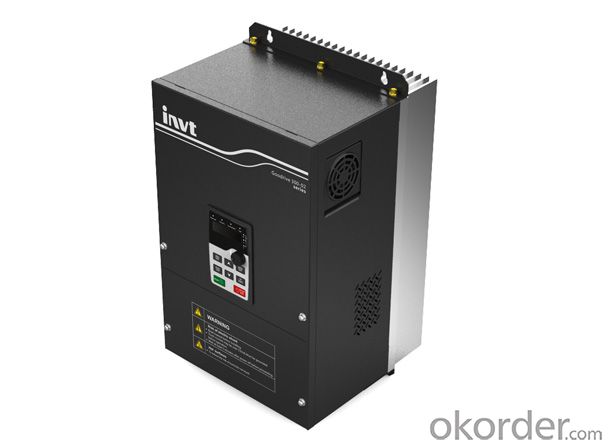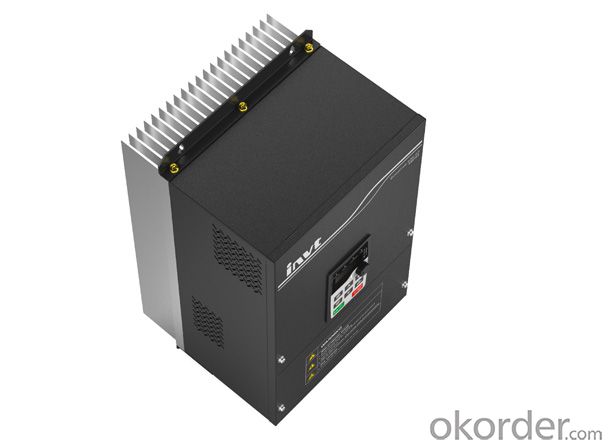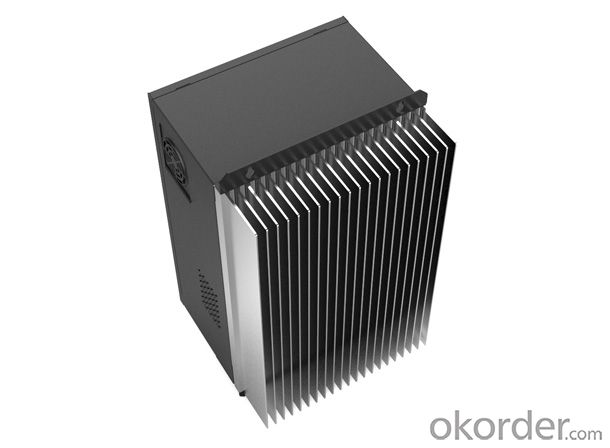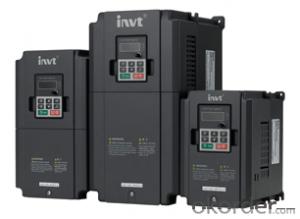Solar Inverter Factory Goodrive200A Inverters with Full Certification
- Loading Port:
- China main port
- Payment Terms:
- TT OR LC
- Min Order Qty:
- 100 pc
- Supply Capability:
- 10000 pc/month
OKorder Service Pledge
OKorder Financial Service
You Might Also Like
Based on DSP control system, Goodrive200A inverters apply V/f vector control and various protections to control asynchronous motors. The air duct, hardware and software have been greatly improved for better environment adaptability, operation and reliable quality certificated by TÜV SÜD.
High performance
1. More Accurate Motor Autotuning;
2. Advanced open loop vector control;
3. Perfect voltage and current control, reducing the fault protection times;
4. Multiple braking modes and instant stopping.
Multi-function with simple operation
1. Separate Air-duct;
2. Multiple installation modes;
3. Optional built-in C3 input filters, optional external C2 filters;
4. Book structure;
5. The rivet design ensures reliable integration connection;
6. Smaller Size;
7. Membrane keypad design (which can be connected to external keypads) is available for inverters (≤15kW); swappable keypads are standard for inverters (≥18.5kW);
8. High Performance Keypad;
9. Embedded braking units of 0.75-30kW inverters, Reduce the occupied space and decrease the cost;
10. Supporting common DC bus;
11. Available on DC power supply;
12. Function of water supply.
Reliable quality certificated
1. The product design follows IEC national standards and passes the CE test certification;
Each Goodrive200A inverter has past the test certification.
2. Advanced thermal technology makes exact thermal design;
3. Wide voltage range meets the requirement of grid environment;
4. Perfect and reliable test system ensure products adapt complicated site environments.
INVT is the only manufacturer achieved ACT certificate of TÜV SÜD .The full name of ACT is Acceptance of Client's Testing, which means the German TÜV SÜD admit the technology level of the lab and accept their separate testing data and test reports officially.
Advantages
High performance, multi-function with simple operation and reliable quality certificated by TÜV SÜD.
Applications
Air compressor, Oil, Warming and water supply, Plastics machine, Mine, Fans and water pumps.
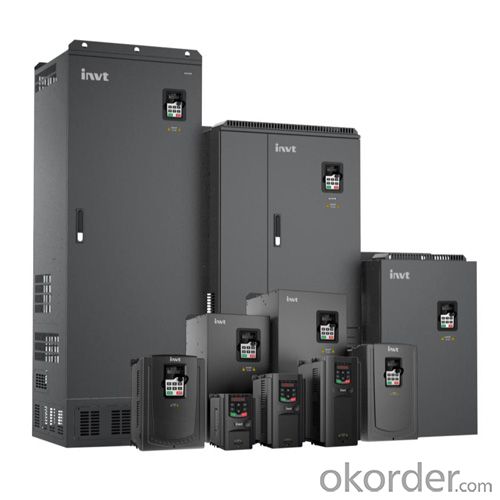

FAQ
Q 1. What’s the payment term?
A. We accept TT,30% deposit and 70% balance against copy of BL
Q 2. How’s the delivery time?
A. usually it will take about 25 days for production
Q 3. Tell me the standard of package?
A. For the small capacity, it use carton, but for big capacity, we will use strong wooden case for protection.
- Q: Can a solar inverter be used with a solar-powered irrigation system?
- Yes, a solar inverter can be used with a solar-powered irrigation system. A solar inverter is responsible for converting the direct current (DC) produced by the solar panels into alternating current (AC), which is required to power various electrical devices. In the case of a solar-powered irrigation system, the solar inverter can convert the DC generated by the solar panels into AC to power the irrigation pump or other electrical components of the system. This ensures that the solar energy captured by the panels can be effectively utilized for irrigation purposes.
- Q: How does a solar inverter handle power quality disturbances?
- A solar inverter handles power quality disturbances by employing various protective measures. It typically includes features such as voltage regulation, frequency control, and surge protection. In the case of voltage fluctuations, the inverter adjusts the output voltage to maintain a stable power supply. Similarly, it monitors the grid frequency and adjusts its output frequency accordingly. Moreover, it incorporates surge protection mechanisms to safeguard against power surges and voltage spikes. Overall, a solar inverter efficiently manages power quality disturbances to ensure a reliable and stable electricity supply.
- Q: How does a solar inverter communicate with other components of a solar power system?
- A solar inverter communicates with other components of a solar power system through various means, such as wired or wireless connections. It typically exchanges information with components like solar panels, batteries, and grid-tie systems to coordinate and optimize the generation, storage, and distribution of solar energy. This communication includes exchanging data on power output, voltage levels, and system status, enabling efficient operation and monitoring of the entire solar power system.
- Q: Can a solar inverter be used in areas with unstable power grids?
- Yes, a solar inverter can be used in areas with unstable power grids. Solar inverters are designed to convert the direct current (DC) generated by solar panels into alternating current (AC) for use in homes or buildings. In areas with unstable power grids, solar inverters can help stabilize the electricity supply by synchronizing the solar power output with the grid. Additionally, some advanced solar inverters have features like grid support functions and voltage regulation, which can further enhance their performance in areas with unstable power grids.
- Q: Can a solar inverter be used in conjunction with a backup generator?
- Yes, a solar inverter can be used in conjunction with a backup generator. In a hybrid system, the solar inverter manages the flow of electricity from both the solar panels and the backup generator, ensuring a seamless transition between the two power sources. This allows for continuous power supply even when solar energy is not available, providing an efficient and reliable solution.
- Q: Can a solar inverter be upgraded or expanded in the future?
- Yes, a solar inverter can be upgraded or expanded in the future. Inverter technology is constantly evolving, and manufacturers often release firmware updates or offer hardware upgrades to improve performance, add new features, or increase capacity. Additionally, in case of increased energy demands or the addition of more solar panels, it is possible to expand the system's capacity by adding additional inverters or upgrading the existing inverter to a higher capacity model.
- Q: How does a solar inverter handle voltage phase imbalance in the grid?
- A solar inverter handles voltage phase imbalance in the grid by continuously monitoring the grid voltage and adjusting its internal control algorithms accordingly. This allows the inverter to dynamically balance the output between the phases, compensating for any phase imbalances in the grid. By doing so, the solar inverter ensures that the electricity it generates and feeds into the grid is well synchronized with the grid's voltage and phase, minimizing any adverse effects of phase imbalance.
- Q: Can a solar inverter be used with different types of grounding systems?
- Yes, a solar inverter can be used with different types of grounding systems. Solar inverters are designed to be flexible and adaptable to various electrical systems and grounding configurations. They can be used with grounded, ungrounded, or impedance grounded systems, allowing for compatibility across different types of grounding systems.
- Q: What is the maximum power output of a residential solar inverter?
- The maximum power output of a residential solar inverter can vary depending on the specific model and capacity. However, on average, residential solar inverters typically have a maximum power output ranging from 3 kilowatts (kW) to 10 kW.
- Q: How does a solar inverter handle power quality issues in the grid?
- A solar inverter handles power quality issues in the grid by continuously monitoring the electricity it receives from the grid. If it detects any power quality issues such as voltage fluctuations, harmonics, or frequency variations, it employs various techniques to mitigate these issues. These techniques include voltage regulation, reactive power compensation, filtering, and synchronization with the grid. By actively managing these power quality issues, a solar inverter ensures that the electricity it feeds into the grid is of high quality and complies with the grid's standards and requirements.
Send your message to us
Solar Inverter Factory Goodrive200A Inverters with Full Certification
- Loading Port:
- China main port
- Payment Terms:
- TT OR LC
- Min Order Qty:
- 100 pc
- Supply Capability:
- 10000 pc/month
OKorder Service Pledge
OKorder Financial Service
Similar products
Hot products
Hot Searches
Related keywords




